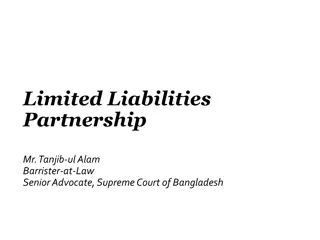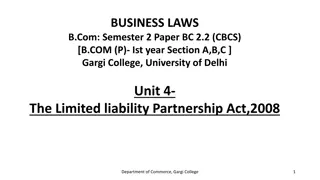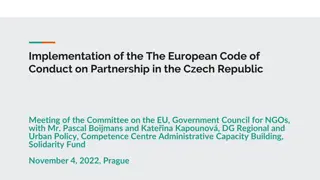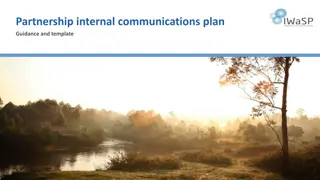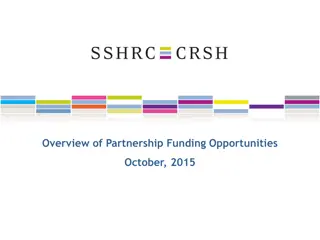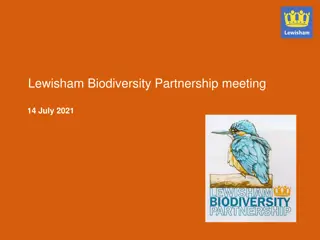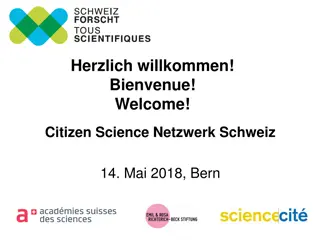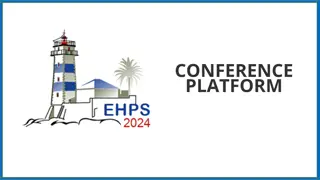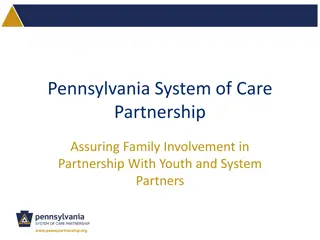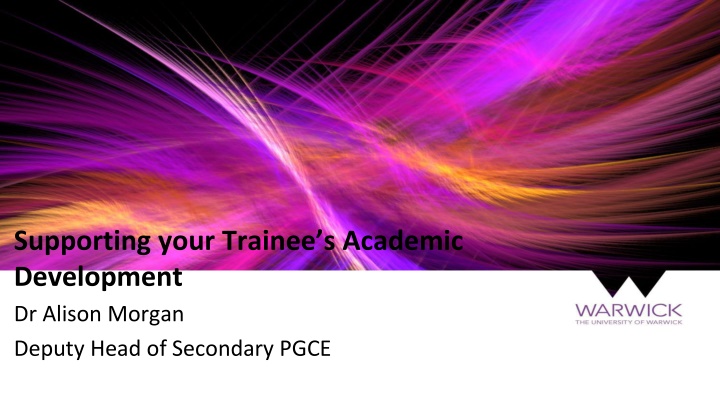
Academic Development in Secondary PGCE: Assessment, Modules, and Challenges
Explore the academic development of trainees in Secondary PGCE with a focus on assessment structures, module breakdowns, and key challenges faced. Dive into the detailed breakdown of PG1 and PG2 modules, including assessment criteria, deadlines, and submission requirements. Discover thought-provoking topics for academic posters and essays, ranging from gender settings in PE to the relevance of Religious Education in Modern Britain. Uncover the significance of Blooms Taxonomy in developing critical thinking and independent learning for student success.
Download Presentation

Please find below an Image/Link to download the presentation.
The content on the website is provided AS IS for your information and personal use only. It may not be sold, licensed, or shared on other websites without obtaining consent from the author. If you encounter any issues during the download, it is possible that the publisher has removed the file from their server.
You are allowed to download the files provided on this website for personal or commercial use, subject to the condition that they are used lawfully. All files are the property of their respective owners.
The content on the website is provided AS IS for your information and personal use only. It may not be sold, licensed, or shared on other websites without obtaining consent from the author.
E N D
Presentation Transcript
Supporting your Trainees Academic Development Dr Alison Morgan Deputy Head of Secondary PGCE
PG Assessment Structure Professional Practice EP918 30 CATS (6) Subject Studies EP929 30 CATS (7) Reflective Practice IE9J1 30 CATS (7) PG1 PG2 PDP Qualification PGCE with QTS Honours Level PCE with QTS PCE with QTS Honours Level PGCert Ed Studies
PG2a Introduced during Induction August/September Submission: 16thSeptember PG1a Introduced w/c 17th September Submission: 6thJanuary PG2b Introduced: w/c 19th November Submission: 28th April Introduced: w/c 29th April Submission: 2ndJune; Presentation: 3rd 27th June PG1b
Module PG1: Subject Studies PG1a PG1b Academic Poster Essay 4000 words (80%) (20%) Deadline: Deadline: 6th January 2019 2nd June 2019 (Presented during viva)
Module Breakdown PG1 ALL ASSESSED ELEMENTS OF THE MODULE MUST BE PASSED PG1a 4000 word essay examining an educational issue related to subject or the teaching of subject. (80%) PG1b Academic poster examining an aspect of teaching, as applied to the subject specialism. To be presented during the viva. (20%)
PG1a Titles How does gender setting in PE affect participation and behaviour? Does Drama result in inclusion or isolation for SEN students? How does the new GCSE English disadvantage students with autism? Should Drama have its own National Curriculum? An evaluation of the strengths and weaknesses of the recent changes to assessment of practical science at GCSE. The value of mixed-ability teaching in English The implications of the new curriculum on the teaching and learning of Geography To what extent is cultural capital a barrier to studying History in Secondary Schools for white working class students? The decline in languages in UK schools does not help equip our young people for a future in the globalised world. What can be done? Is Religious Education still relevant in Modern Britain? The barriers to learning mathematics and overcoming the fear of numbers Investigating the low uptake of Science by female students in post-compulsory education
Blooms Taxonomy as a Method for Developing Critical Thinking and Independent Learning C. L. Davison Student Number: 1523171 6. Create 1. Remember Johnson and Johnson (1999) explore what constitutes cooperative learning and how it can be successful. They identify five elements of cooperative learning: Positive interdependence Individual accountability Face to face promotive interaction Social skills Group processing demonstrate their own development of skills . Bloom s Taxonomy was created in 1956 with the intention of supporting teachers to classify the intended behaviour of students. (Bloom 1956, p. 12) and as a way of monitoring or obtaining evidence on the extent to which the desired and intended behaviours have be learned by the student. (Bloom 1956, p. 13). In order to ensure the success of developing critical thinking skills the students need a greater focus on individual accountability and group processing in their cooperative learning. Students should evaluate the effectiveness of their group and be expected to In 2001 Bloom s Taxonomy was revised, changing the original noun form into verbs and swapping the top two levels so that Creating previously known as Synthesis is now at the top level. (Stobaugh, 2013) By synthesizing Johnsons and Johnsons research on cooperative learning with the resources created based on Bloom s Taxonomy, some of the previously faced difficulties could be mitigated creating an environment promoting critical thinking and learning. 5. Evaluate The sentence starters alone are not enough to ensure high level questioning; this must be coupled with regular teacher reinforcement about what is meant by the term analyse or evaluate. It is also necessary to bear in mind that critical questioning is a skill that develops over time which can be supported by resources and modelled by teachers but it cannot be taught. What went well: Students were able to identify, even after the first week of using the resources, which card they thought they should be using, and consequently at which point in their learning journey they were. Problems encountered: Perhaps the clearest problem encountered was that the use of the cards involved a large amount of group work, creating questions to pose to each other. As in inevitable in a group work situation, there were occasions where not all students were on task and consequently not engaging in developing their critical thinking skills. Bloom s Taxonomy is an excellent way of tracking students learning, developing their critical thinking skills and creating self- aware learners, but this can only be accomplished if students are fully engaged in the lesson activities and therefore the learning process. 2. Understand After initial research, understanding as to how Bloom s Taxonomy could be used in the targeted setting was required. In September 2015 the schools introduced a sixth form and there has been agreement and frustration across subjects that the students are ill prepared for A-level education as, up until that point very little independent learning and thinking has been required of them. Stobaugh (2013) explains that increasing the level of critical- thinking skills in any program raises the level of rigor (p.5)and this is where Bloom s taxonomy can come into play in the classroom. It can be used: As a tool to support critical thinking To track progression Examine the level of thinking and questioning in a classroom. Lesson Journey Each card relates to each of the levels of learning on the revised version of Bloom s Taxonomy Apply Apply I can use my knowledge in new situations. 3. Apply How would you show your understanding of ..? Key words on the front of the card and the question starters on the back of the card support students in developing their critical thinking skills. With this in mind, two resources were created to implement critical thinking, based on the theory of Bloom s Taxonomy, in the classroom. The first was the lesson journey. The teacher is able to use this to reflect on their own lesson during the planning process, to ensure that they are providing a activities that challenge the pupils and move their thinking forward. It is also used as a way to encouraging the pupils to become more aware of their learning. They can track their own progress and their learning journey through the lesson, becoming aware that they have mastered a skill if they are able to complete the evaluation activity at the end of the lesson. The second resource created was a pack of six double sided Bloom s questioning cards. I can statement on the front of each card supports students in understanding what each level of the Taxonomy, and consequently their learning, involves. 4. Analyse Key Words What examples can you find to show ..? The Lesson Journey and Question Cards were trialled with a year 8 set 4 (of 5) class containing 22 students over a series of four lessons in which they were studying a Shakespeare play. The cards were used to support a variety of questioning activities. Students found it easy to create low level Remember questions to test their partner as a lesson starter. Very successful in using their cards to create higher level analysis questions in a hot-seating activity to examine character in the play. Many students struggled to create analysis questions based on an extract from a scene and, on occasion, were using the sentence starters on the Analyse card but still creating low level Understand or Remember questions. Examine Illustrate Interpret Interview Plan Solve Teach Use Administer Apply Associate Connect Construct Correlate Develop Dramatise How would you use what you have learned to develop ..? What questions would you ask in an interview with ..? Could this have happened in ..? What would happen if ..? Back Front The card used should link to the lesson journey, reinforcing students self awareness of their learning process. References: Bloom, B., et al., ed. (1956). Taxonomy of Educational Objectives: The Classification of Educational Goals. New York: David McKay Company, Inc. Johnson, D., Johnson, R. (1999). Making Cooperative Learning Work. [Online]. (URL http://0-eds.b.ebscohost.com.pugwash.lib.warwick.ac.uk/eds/pdfviewer/pdfviewer?sid=763bf7c4-064d-4b90-91aa- b4be5b6a2c7%40sessionmgr114&vid=1&hid=127). Theory Into Practice, 38(2). (Accessed on 28 November 2015) Stobaugh, R. (2013). Assessing Critical Thinking in Middle and High Schools: Meeting the Common Core. New York: Routledge.
Module PG2: Reflective Practice PG2a PG2b Essay 5000 words Formative Essay 1000 words (0%) (100%) Deadline: Deadline: 16th September 2018 28th April 2019
Module Breakdown PG2 All postgraduate work is marked out of 100 against M-level marking criteria PG2a 1000 word essay examining cognitive development and theories of learning. NOT for credit feedback only, intended to help identify specific needs regarding M-level study. NB. Writing for Social Sciences is different to other disciplines so we strongly encourage everyone to attempt this work.
Module Breakdown PG2 ALL ASSESSED ELEMENTS OF THE MODULE MUST BE PASSED PG2b 5000 word essay examining one of the Teachers Standards in detail, with reference to theory, policy and practice. There is a comparative aspect to this assignment, contrasting the chosen standard across both placements and reflecting on trainee s own development. (100%)
PG2 Titles Critical Reflections on differentiation in secondary schools and how it affects gifted and talented students the Effective use of Feedback in the Classroom in-school summative assessment and life after levels the Use of Mobile Phones in the Classroom establishing High Expectations: how to inspire, motivate and challenge pup to what extent Behaviour for Learning is more effective than the Reward and Sanction System at School how ICT is used within a classroom to bring about effective learning
PGCE Classification Calculated from the mean average mark across modules PG1 and PG2 70+ % Distinction 60+ % Merit 50+ % Pass < 50 % Fail at M-level (may pass at H-level)
Resubmission One chance to resubmit each piece of failed work at M-level Tutorial / intervention support to work through feedback Pass second time around is capped at 50% Failure second time will be reconsidered at H-level Work is not officially failed until Exam Board, from then trainees have one year to resubmit (note: possible delay to QTS)
Masters Marking Criteria Comprehension Analysis Critique Presentation Grade A*/A A wide range of relevant sources, which are well understood, are skilfully and concisely deployed to support arguments. Recognises the demands of the question providing a well- focused, relevant answer. Skilful evaluation which synthesises both the literature and personal perspectives in response to the question. Material is very well-organised and the structure complements the content. (Mark of 80 or above = A*; 70 -79 = A) Sets sources and viewpoints in a wide context and makes a comprehensive assessment of issues involved. Demonstrates a balanced critical understanding of the issues. A high level of written communication with very few errors of spelling, grammar and syntax. Demonstrates a highly developed understanding of relevant concepts, theories and/or research methodologies. High levels of ability to analyse, identify relevant issues, synthesise and apply knowledge and concepts. Some originality of thought and creativity. Points are comprehensively and appropriately substantiated. Displays critical awareness of methodological and theoretical considerations. Mastery of referencing conventions with very few errors or omissions. Relevant theories/theoretical models are applied to deepen understanding of the links between theory and practice. B Sound and thorough grasp of relevant concepts, theories and/or research methodologies which are well- summarised. Recognises the demands of the question providing a focused, relevant answer. Perceptive commentary on evidence and materials used in response to the question. Well-structured work displaying attention to the logic and development of the piece. (Mark of 60 - 69) Sets sources and viewpoints in context. Able to make appropriate critical points. A clear written style. Spelling, grammar and syntax are generally good. A good ability to analyse, identifying useful points synthesise and apply knowledge and concepts. Displays awareness of methodological and theoretical considerations. Points are consistently and appropriately substantiated. The work is supported by references to a good range of relevant sources which are used in a relevant way. Most features of the referencing system are used correctly. Application of theories/theoretical models in a relevant way to answer to the question. C An adequate range of relevant source materials is used. The response to the question addresses basic requirements and there may be some irrelevant material. Sensible commentary on evidence and materials used throughout, in response to the question. A generally satisfactory overall structure although it may lack balance in parts or fail to integrate some material. (Mark of 50 - 59) Understanding of main concepts, theories and/or research methodologies is fair but lacks depth and/or breadth. There may be some gaps or areas of confusion. The attempt at analysis, synthesis and application of knowledge and concepts is competent but lacks depth and breadth. Limited critical reflection. An adequate written style which is not impaired by the occasional errors of spelling, grammar and/or syntax. Generally appropriately substantiated. Pass Mark 50 Limited use and understanding of theoretical models. The recommended referencing system is used but with some errors and omissions. D Some evidence of relevant reading. Introduction of basic concepts and effort made to relate them to the demands of the question which have been only partially understood, leading to irrelevant material. Some sensible comment is made. Weak structure. Understanding of the subject matter is limited. The work displays major gaps in knowledge, serious misconceptions and/or factual inaccuracies. Uncritical commentary. Expression of ideas is sometimes confused or unclear. Communication may also be impaired by errors of spelling, grammar and/or syntax. (Mark of 40 49) No sustained analysis, mainly descriptive with and an inability to apply knowledge and synthesise material. Lacking appropriate substantiation. Referencing marred by frequent errors and omissions. Very limited reference to theoretical models. E Few relevant sources used. The question may have been ignored or badly misunderstood, and there is much irrelevance. The commentary may not be seen as sensible in relation to the question. Unstructured presentation, lacking coherence. Serious gaps and/or errors in knowledge and understanding. Expression of ideas is poor and may also be impaired by frequent errors of spelling, grammar and/or syntax. (Mark below 40) Superficial treatment of the topic much of which is descriptive. Lacks appropriate critical or theoretical framework. Much of the writing is unsubstantiated. The recommended referencing system has not been mastered.
PASS A/A* 70 % (Distinction) B 60 % (Merit) C 50 % FAIL D 40 %
Areas of Development for Trainees Essay writing social sciences Academic writing Accurate writing Essay structure Critical analysis Constructing an argument Harvard referencing
University Support Lead lectures Detailed brief for each assignment Online resources Workshops 1-1 Tutorials Library sessions Student Services
School Support Discuss essay plans in mentor meetings Provide resources school policies, data, etc Subject specific resources journal articles, CPD materials, websites Support with time management time and space to study Mock poster presentation Proof reading!
Proof reading The University considers it acceptable for proof-readers to identify, but not make corrections to: common typographical, spelling or punctuation errors; formatting and layout errors and inconsistencies such as page numbers, line spacing, font size, headers and footers; grammatical and syntactical errors and anomalies; lexical repetition or omissions; sections of text where the meaning is ambiguous; minor formatting errors in referencing (for consistency and order); errors in the labelling of diagrams, charts and figures. proofreading
Proof reading The University does not consider it acceptable practice for proof-readers to amend existing content whether through addition or reduction and, in particular, it prohibits proof-readers to: Rewrite content where meaning is ambiguous; Add to existing content; Alter argument or logic where faulty; Re-arrange or re-order sentences to enhance structure or argument; Implement or alter a referencing system or add to references; Check or correct facts, data calculations, formulae or equations; Translate text drafted by students, noting that this does not prohibit translation of source material as long as it is properly referenced.
Introduction (Maths) This paper discusses the implications of current theories of cognitive development on mathematics education. Research in this area has, to some extent, accepted constructivist theories as suitable for exploring how mathematics learning takes place and how best to support students cognitive development. This is not to say that other theories, including behaviourism, do not have a role to play; however, it seems that mathematics education has focused less on researching the latter and has left studies adopting a behaviourist approach to other areas such as psychology. Consequently, the main focus here is on constructivist approaches that have influenced the teaching and learning of mathematics After a discussion contrasting behaviourist and constructivist theories in the next section, this paper proceeds consider the work of two constructivist theorists Piaget and Vygotsky whose work has shaped the way mathematics is taught nowadays.
Theory: Multiple Intelligences (Music) The way in which we digest, store and use information is said to vary dramatically from one person to another. For many people, there is no one way to which we learn. These ideas form the basis of Howard Gardner s theory of multiple intelligences (MI). Gardner s studies bring to light the idea that people do not have a general intelligence ; a term coined by Thurstone and Spearman when developing the IQ theory, but are defined by several intelligences. Gardener (1983, 1993) identifies nine main types of intelligences; two of these can be closely linked to Music and are vital in the teaching and learning of the subject. Musical/Rhythmic Intelligence is simply and fundamentally the appreciation and understanding of music. Individuals with this intelligence will think in sounds, rhythm and patterns and will have a particular gift for producing music. It is likely they will have a natural ear for sound, for example, they will quickly be able to understand the tonality of a piece of music (major or minor tones) and associate this with a particular emotion.
Piagets Maturational Theory (PE) Piaget distinctly expressed the need for developmentally appropriate education which is consistent with an individual s physical and cognitive abilities. Therefore, in a PE lesson, a teacher would not introduce the complex theoretical concepts and definitions of the circulatory system or respiratory system to a year 7 group. Instead, the teacher would teach this to an older group, as they are said to have reached an appropriate stage of cognitive development. Furthermore, developmentally appropriate activities exist to help, not hinder children s cognitive development. With reference to the Formal Operational stage, a PE teacher could present students with a proposed problem, allowing them to plan an organised approach to solving the problem in small groups. The importance of children being active in learning activities is another important message which can be taken from the Piaget s constructivist learning theory. Therefore, instead of adopting a didactic teaching approach, a PE teacher could utilise the guided discovery approach when teaching tactics. For example, instead of dictating to pupils which tactics they should select and apply in a competitive game of netball, the teacher could first allow pupils to actively experiment with their own ideas, allowing them to interact with their environment. Although Piaget s theory is well-known within the field of education, it has also been subject to much criticism for underestimating children s abilities (Miller 2011). A child s developmental stage is not solely restricted to an individual s age as individual s progress at different rates (Berk 2004). Moreover, Piaget has also received criticism for failing to consider the social nature of cognitive development.
Gardner vs Bandura (English) Gardner has made the case for a wider array of ways to assess students, arguing that the broad spectrum of students would be better served if disciplines could be assessed through a variety of means (Gardner 1991b, p.13)[ ] While the application of MI theory into classroom practice can go some way to increasing student attainment, it does not make students aware of the academic standards that are expected of them. This could be addressed by applying Albert Bandura s social learning theory. In contrast to Gardner, Bandura calls for a more teacher- centred approach , claiming that children learn by mimicking others (Bratcher 2012). If we apply this to a school context, this would translate to children learning by mimicking the teacher. If we take this to be true, then it places far greater emphasis on teacher instruction. Suzanne Bratcher (2012) has cited the importance of modelling when it comes to teaching writing, arguing that it helps students better understand 'the writer's process of thinking and questioning and decision making' (Bratcher 2004, p.177). Taking Bratcher s findings further, one finds multiple ways to apply Bandura s theory [ ]
Conclusion (History) To conclude, it is possible to see in this study the formative contributions of these theories to the field in terms of child development, cognitive function and pedagogy. Yet, naturally one model is seemingly better suited to the practice of History teaching, particularly Vygotsky s social-cultural theory. The main tenet of the theory centres on the interactional relationship between teacher and student, which compliments the increasingly collaborative nature of the historical discipline itself. The sense of shared learning that can be wholly student-centred not only piques the interests of the individuals, but also allows for the careful fostering and support of the student s thinking. Whilst this might be a heavy task to carry out for whole lessons, it is possible to differentiate instruction that responds to the needs of the learner and pushes them to the edge of the proximal zone of development. Through careful mediation, students may become confident in the use of their own knowledge and begin to eventually exercise independent thought, which can be attested to in my observation of this practice in schools. Within this framework, scaffolding acts as practical and effective pedagogical device to facilitate the learning process.


